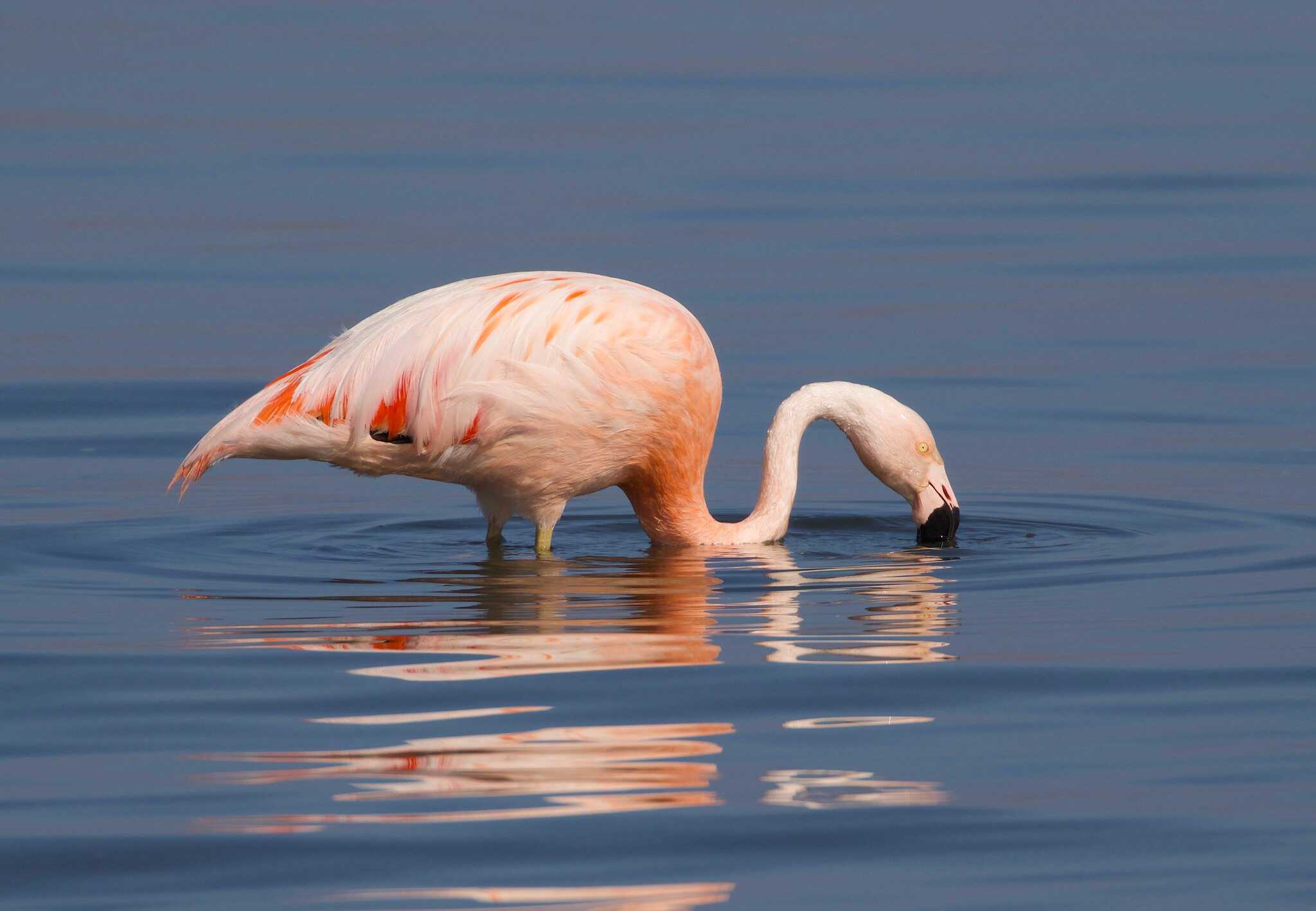

Flamingos may appear calm as they wade through shallow water with their heads submerged, but new research reveals a surprising truth: flamingos use water tornadoes to trap their prey.
These swirling motions, created by the birds’ feet and beaks, help them hunt and capture small, fast-moving animals beneath the surface, proving they are far more active feeders than once believed.
The findings, published in the Proceedings of the National Academy of Sciences, challenge the long-standing view that flamingos simply filter still particles from water.
“Flamingos are actually predators,” said Victor Ortega Jiménez, assistant professor of integrative biology at the University of California, Berkeley. “They are actively looking for animals that are moving in the water, and the problem they face is how to concentrate these animals, to pull them together and feed.”
Researchers studied Chilean flamingos at the Nashville Zoo and used 3D-printed models to replicate the birds’ feet and L-shaped beaks. They found that flamingos use their flexible, webbed feet to stir up sediment and push it forward in circular motions.

Then, by quickly lifting their heads, Flamingos create whirlpools or water tornadoes that help draw food particles toward their mouths.
This movement continues as the birds keep their heads upside down in the water. Their beaks, angled to lie flat against the lakebed, create smaller water swirls during rapid snapping – a behavior known as “chattering” – that helps guide food directly into the mouth, where it is filtered and swallowed.
“It seems like they are filtering just passive particles,” Ortega Jiménez said. “These animals are actually taking animals that are moving.”
The shape of the flamingo’s beak plays a key role in feeding. The flat, angled front of the beak allows the bird to perform a behavior called skimming. By stretching its neck forward and snapping its beak rapidly, the flamingo generates sheet-like swirls that help gather prey near the mouth.
Researchers found that this method, along with the upward head motion, forms small tornado-like currents strong enough to trap agile creatures, including copepods and brine shrimp.
Ortega Jiménez refined 3D-printed models of flamingo feet and beaks. These models helped him study how water and particles moved during beak chattering.
In 2024, after moving to UC Berkeley, he ran new experiments using a real flamingo beak attached to a mechanical device. A small pump inside the mouth mimicked the tongue’s motion. This setup confirmed that chattering significantly boosts feeding efficiency.
“The chattering actually is increasing seven times the number of brine shrimp passing through the tube,” he said.
Flamingo feeding starts with the feet. In shallow water, the birds often move in place or walk in circles. Their soft, collapsible webbing allows them to lift their feet cleanly from mud without suction.
Rather than stomping, flamingos glide their feet through water – an efficient movement that could also benefit robot mobility in similar conditions.

Ortega Jiménez compared soft and rigid foot models. The flexible design pushed sediment forward in useful swirls, while rigid feet only created random turbulence.
He also demonstrated that pulling a 3D model of the head upward in water at about 40 centimeters per second created a strong vertical vortex. This movement gathered food particles efficiently and was powerful enough to trap even fast-moving prey.
Tien Yee, a co-author of the paper and professor at Kennesaw State University, used computer models to simulate how water moves around a flamingo’s beak and feet. The simulations confirmed what physical tests showed: the swirling water patterns help collect food particles.
“We observed when we put a 3D printed model in a flume to mimic what we call skimming,” Ortega Jiménez said. “They are producing symmetrical vortices on the sides of the beak that recirculate the particles in the water so they actually get into the beak.”
Flamingos chattering also adds to the effect of water tornadoes creation. The upper beak stays still while the lower one moves rapidly – about 12 times per second – creating strong currents that help pull in prey.
Ortega Jiménez plans to continue his research by exploring how the flamingo’s piston-like tongue helps suction food, and how the comb-like edges of the beak filter prey from salty or even toxic water.
“Flamingos are super-specialized animals for filter feeding,” he said. “It’s not just the head, but the neck, their legs, their feet and all the behaviors they use just to effectively capture these tiny and agile organisms.”
In addition to Yee, the study’s co-authors include postdoctoral fellow Pankaj Rohilla, graduate student Benjamin Seleb, and Professor Saad Bhamla of Georgia Tech. Jake Belair of the Nashville Zoo also contributed.
